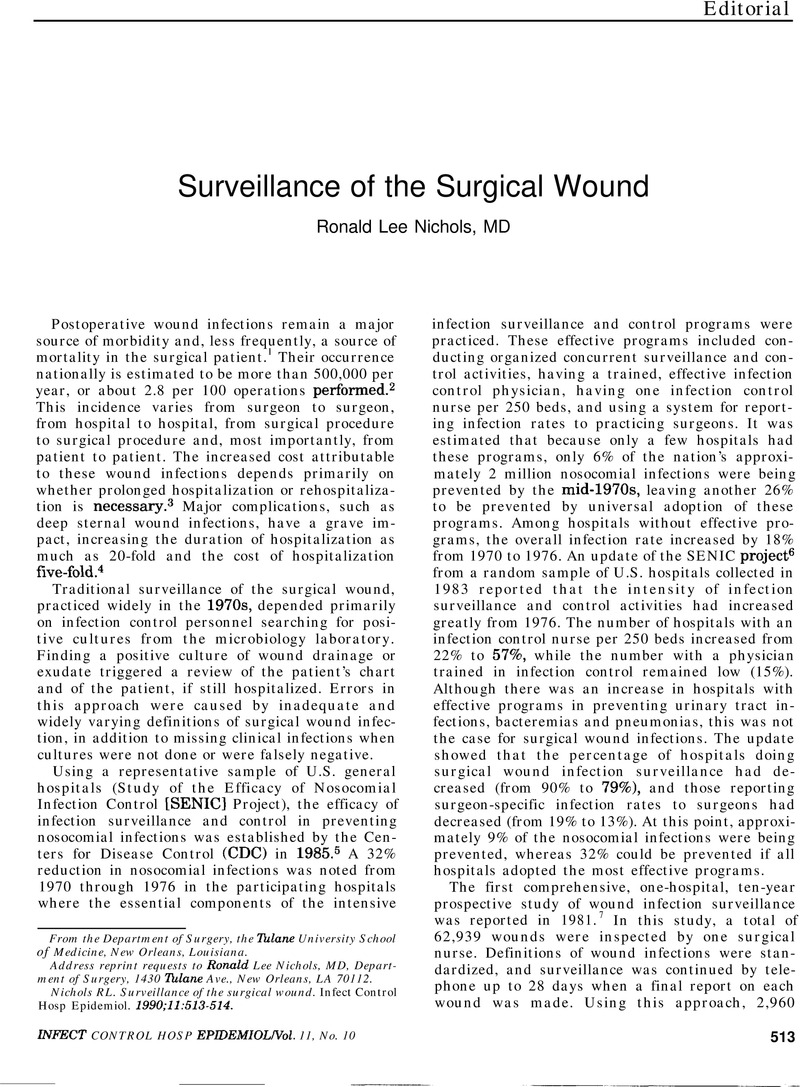Crossref Citations
This article has been cited by the following publications. This list is generated based on data provided by Crossref.
Buchanan-Chell, Maureen
and
Taylor, Geoffrey
1992.
Use of generic quality improvement chart review to recognize nosocomial infection.
American Journal of Infection Control,
Vol. 20,
Issue. 6,
p.
310.
Poulsen, K B
Wachmann, C H
Bremmelgaard, A
Sørensen, A I
Raahave, D
and
Petersen, J V
1995.
Survival of patients with surgical wound infection: A case-control study of common surgical interventions.
Journal of British Surgery,
Vol. 82,
Issue. 2,
p.
208.
Taylor, Geoffrey
Herrick, Tiffany
and
Mah, Manuel
1998.
Wound infections after hysterectomy: Opportunities for practice improvement.
American Journal of Infection Control,
Vol. 26,
Issue. 3,
p.
254.
Arabshahi, Kamran Soltani
and
Koohpayezade, Jalil
2006.
Investigation of risk factors for surgical wound infection among teaching hospitals in Tehran.
International Wound Journal,
Vol. 3,
Issue. 1,
p.
59.



